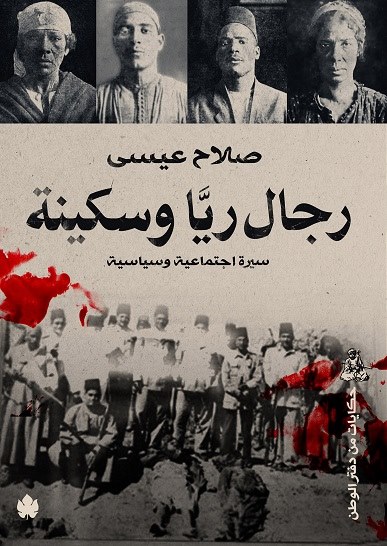This article was last updated on April 16, 2022
Canada: ![]() Oye! Times readers Get FREE $30 to spend on Amazon, Walmart…
Oye! Times readers Get FREE $30 to spend on Amazon, Walmart…
USA: ![]() Oye! Times readers Get FREE $30 to spend on Amazon, Walmart…
Oye! Times readers Get FREE $30 to spend on Amazon, Walmart…
Karma Publishing House has issued a new edition of one of late Egyptian writer Salah Eissa’s Raya and Sakina’s Men just a month after the author’s death:

The re-issue — now available at the Cairo International Book Fair — presents a history of two Egyptian sisters considered the country’s most infamous serial killers, killed 17 women between 1920 and 1921, and were sentenced to death in May 1921.
The excerpt that appears on Youssef Rakha’s Cosmopolitan Hotel is from late Salah Eissa’s “vast and discursive study of the lives and the worlds of the notorious serial-killers Raya Bint Ali Al Hammam and her sister Sakina, and their husbands Hasballah Saeed Maraei and Mohammed Abdel Aal.”
Raya and Sakina and their husbands were arrested in Alexandria in early 1921 on suspicion of murder and it soon became clear that they had been responsible for the disappearance of a number of women in the neighbourhood of Labban where they ran an illegal (unlicensed) brothel. They were thought to be guilty of the robbery and murder of at least seventeen women, many of whom had worked for them as prostitutes. They were hanged in 1921.
Public attention focused on the sisters: the combination of their gender and the violence, sexual promiscuity and general unashamed degradation of their lives generated a fascination which fed into the many films and plays that dealt with their murders.
And from the opening of the excerpt:
Orabi Hassan, the first of his new neighbours that Hasballah got to know in Maskoubiya, was a short-statured young man with black hair, honey-coloured eyes and light-brown skin. At the time—that is, in 1917—he was twenty-five years old, more or less the same age as Hasballah, and was, also like him, a Southerner. He had been born in Abnoub Al Hamam, a village in the governorate of Assiut, where he spent his childhood until, in early adolescence, the taghreeba propelled him northwards to Alexandria in search of a livelihood, just as it would thousands of Southerners.
He was later to recall that he and his siblings had inherited four feddans of land on the death of their father, but that he had ceded his share to his mother and younger brothers, who worked it and lived off it, and would supply him in exchange with grain and ghee. But no effort was made to establish the veracity of these claims and they do not seem to match with the life he led in Alexandria. There, operating as fituwa, flaunting his physical strength, boasting of his courage and under the appellation of Orabi Al Suwameiey (a reference to the Assiut village of Al Suwamei whose inhabitants were bywords for bravery and were related to the Bani Samei, one of the Arab tribes which settled in Egypt), he would tell anyone who challenged his credentials that merely by lifting the staff in his hand he could shut a street down from end to end: pedestrians taking shelter in doorways, not a shop door staying open…
Click HERE to view more.
You can publish this article on your website as long as you provide a link back to this page.

Be the first to comment